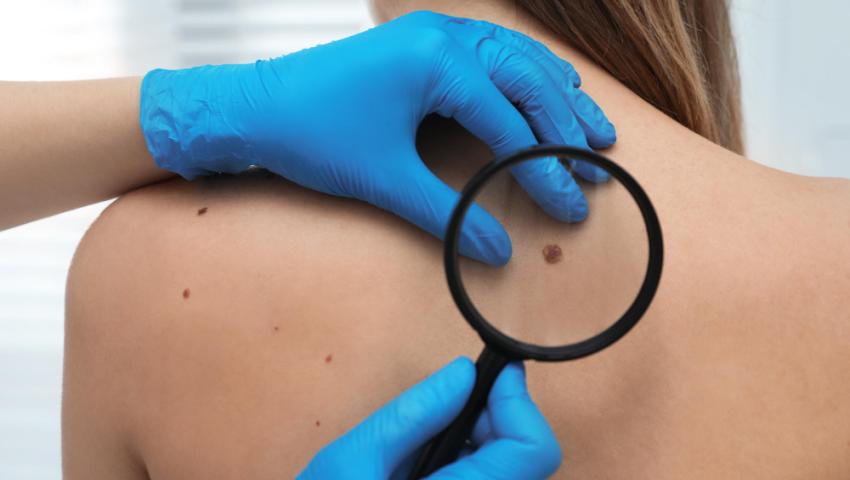
Mole Removal
At the Indian Skin Clinic, we offer advanced and safe mole removal treatments to help you get rid of unwanted moles for aesthetic or medical reasons. Whether the mole is benign or requires removal due to discomfort or suspicion of abnormal growth, our procedures are conducted under expert supervision to ensure effective and scar-minimized results.
Reasons for Mole Removal:
- Aesthetic Concerns: To improve skin appearance by removing visible or raised moles.
- Medical Reasons: Suspicious moles that change in size, shape, or color.
- Discomfort: Moles in areas prone to irritation from clothing or shaving.
Types of Moles We Treat:
- Benign Moles:
- Harmless and often small or skin-colored.
- Pigmented Moles:
- Dark brown or black moles.
- Raised Moles:
- Can be smooth or rough, often protruding from the skin.
- Atypical Moles:
- Irregularly shaped or growing moles that may need medical evaluation.
Mole Removal Techniques:
Our clinic uses advanced, minimally invasive methods tailored to your mole type and skin condition.
1. Laser Mole Removal:
- Non-invasive, painless procedure using advanced laser technology.
- Suitable for small, flat, or pigmented moles.
- Benefits:
- Precise targeting of mole tissue.
- Minimal downtime and scarring.
2. Surgical Excision:
- Recommended for larger, deeper, or irregular moles.
- The mole is carefully cut out, and stitches may be applied.
- Performed under local anesthesia.
3. Shave Excision:
- Removes raised moles by shaving them off at the skin level.
- Best for raised, non-cancerous moles.
4. Electrosurgery (Cauterization):
- Uses heat to remove small moles and seal the skin.
- Minimal bleeding and quick recovery.
The Procedure:
- Consultation:
- A thorough examination by Dr. Ayesha Faizan to assess the mole's nature (benign or suspicious).
- A dermatoscope may be used for detailed analysis.
- Biopsy may be recommended for suspicious moles.
- Preparation:
- Local anesthesia is administered for painless treatment.
- Mole Removal:
- The selected procedure is performed, ensuring precision and minimal skin damage.
- Post-Treatment Care:
- Instructions on wound care and scar management.
- Prescription creams or silicone gel sheets may be recommended to minimize scarring.
Benefits of Mole Removal at Our Clinic:
- Expert Supervision:
- Led by Dr. Ayesha Faizan, a board-certified dermatologist with 14+ years of experience.
- Advanced Technology:
- Use of FDA-approved lasers and minimally invasive techniques.
- Safe & Hygienic:
- Strict sterilization protocols ensure a safe and comfortable procedure.
- Scar-Minimizing Techniques:
- Procedures are designed to leave minimal or no visible scars.
Recovery and Aftercare:
- Healing Time: Typically 1-2 weeks, depending on the method used.
- Care Instructions:
- Keep the area clean and moisturized.
- Avoid direct sun exposure; use SPF 50 sunscreen.
- Do not scratch or pick at the healing site.
- Follow-Up: Regular follow-ups ensure proper healing and satisfaction with results.
Why Remove Moles at Our Clinic?
- Holistic Approach: Combining medical safety with aesthetic goals.
- Customized Treatment: Tailored techniques to suit your skin type and concerns.
- High Patient Satisfaction: Rated 4.9 stars on Google for exceptional care.
Achieve smooth, mole-free skin with our safe and effective Mole Removal Treatments. Call us or visit the nearest Indian Skin Clinic branch to schedule your consultation today!
-
Expert Care by Dr. Ayesha Faiza
With over 14 years of experience, Dr. Ayesha Faizan has helped countless individuals achieve healthy, radiant skin and hair through personalized treatments designed for optimal results.
-
State-of-the-Art Technology
Equipped with the latest technology and minimally invasive techniques, our clinic ensures high standards of quality and care, delivering effective and safe results to every patient.
"Healthy skin is a reflection of overall wellness."
Dr. Ayesha Faizan, Dermatologistn
Benefits Of Our Services
With a patient-centric approach, our treatments inspire confidence and help you rediscover your inner beauty while prioritizing your overall well-being:
- Exceptional Care: Comprehensive services for your aesthetic and medical needs.
- Emergency-Ready: Equipped to handle complex procedures and surgeries.
- Advanced Medications: We use only the most effective, dermatologist-recommended treatments.
- Cutting-Edge Equipment: All treatments utilize FDA-approved technology for superior results.
At the Indian Skin Clinic, we’re committed to helping you look and feel your best with care that reflects your unique beauty.


